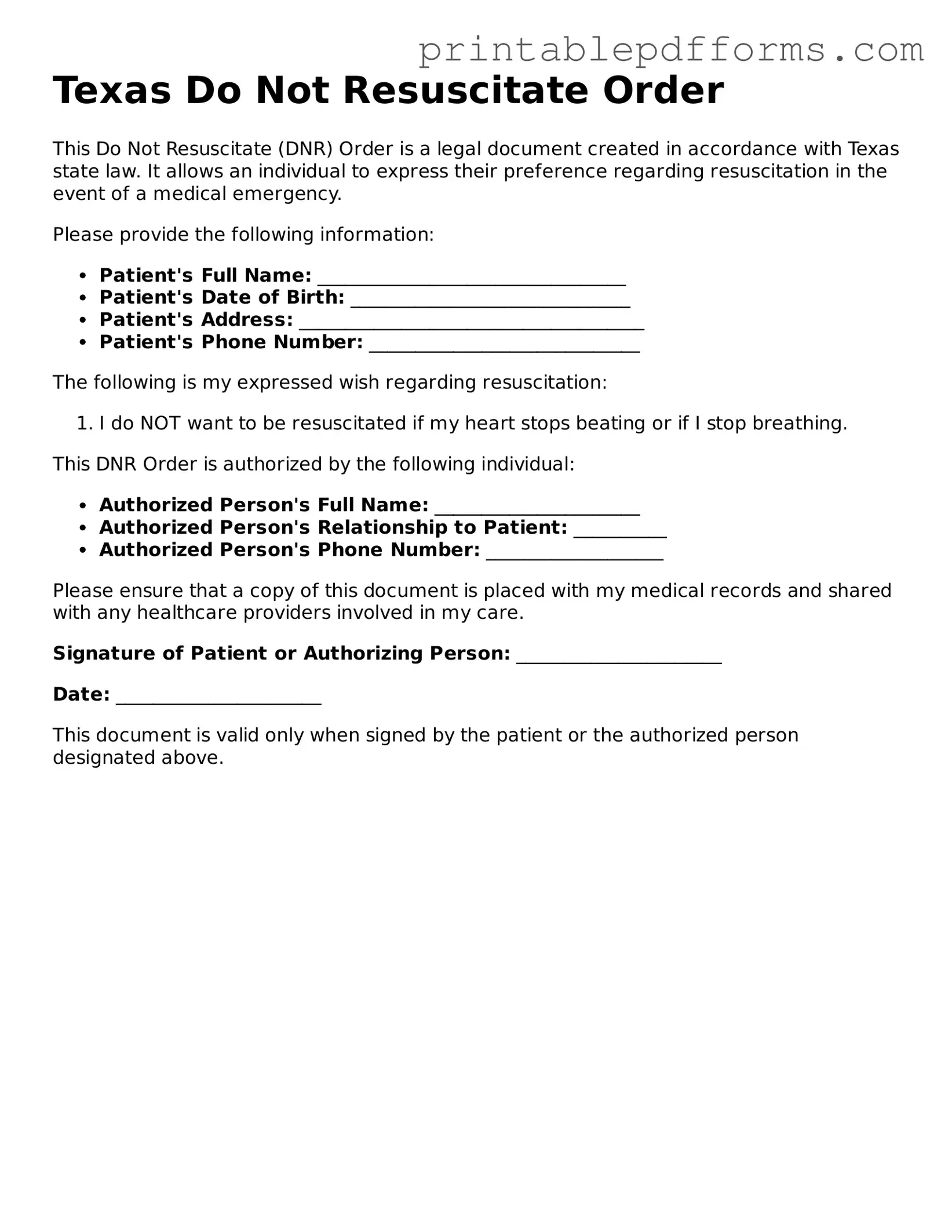What is a Texas Do Not Resuscitate Order (DNR)?
A Texas Do Not Resuscitate Order (DNR) is a legal document that allows individuals to express their wishes regarding resuscitation efforts in the event of a medical emergency. If a person is unable to communicate their preferences, this order guides healthcare providers on whether or not to perform cardiopulmonary resuscitation (CPR) and other life-saving measures.
Who can request a DNR in Texas?
In Texas, a DNR can be requested by a competent adult or a legal guardian. Additionally, a person’s healthcare proxy or agent, designated under a medical power of attorney, may also request a DNR on behalf of the individual if they are unable to do so.
You can obtain a Texas DNR form from various sources, including:
-
Healthcare providers, such as hospitals or clinics.
-
State health department websites.
-
Online resources that provide legal documents related to healthcare.
It’s important to ensure that the form is the official Texas DNR form to ensure its validity.
The Texas DNR form typically requires the following information:
-
The name and date of birth of the individual.
-
The signature of the individual or their legal representative.
-
The date the form was signed.
-
Contact information for the person completing the form.
In some cases, a physician’s signature may also be required to validate the order.
Is a DNR order valid in all healthcare settings?
Yes, a DNR order is generally valid across all healthcare settings in Texas, including hospitals, nursing homes, and emergency medical services. However, it’s crucial to ensure that the order is easily accessible and clearly visible to healthcare providers at all times.
Can a DNR order be revoked?
Absolutely. A DNR order can be revoked at any time by the individual or their legal representative. To revoke the order, simply destroy the original document and inform healthcare providers of the change in wishes. It’s advisable to complete a new DNR form if you wish to establish a different set of instructions.
What happens if I don’t have a DNR order?
If a person does not have a DNR order and experiences a medical emergency, healthcare providers are required to perform resuscitation efforts, including CPR. This can lead to unwanted medical interventions, particularly for individuals who may not wish to receive them.
Can I discuss my DNR wishes with my family?
Yes, discussing your DNR wishes with family members is highly encouraged. Open conversations can help ensure that your loved ones understand your preferences and can advocate for them if necessary. It can also reduce confusion or conflict during critical moments.
Are there any costs associated with obtaining a DNR order?
Generally, there are no costs associated with obtaining a Texas DNR order itself. However, some healthcare providers may charge for the services related to discussing and documenting your wishes. Always check with your healthcare provider for any potential fees.
